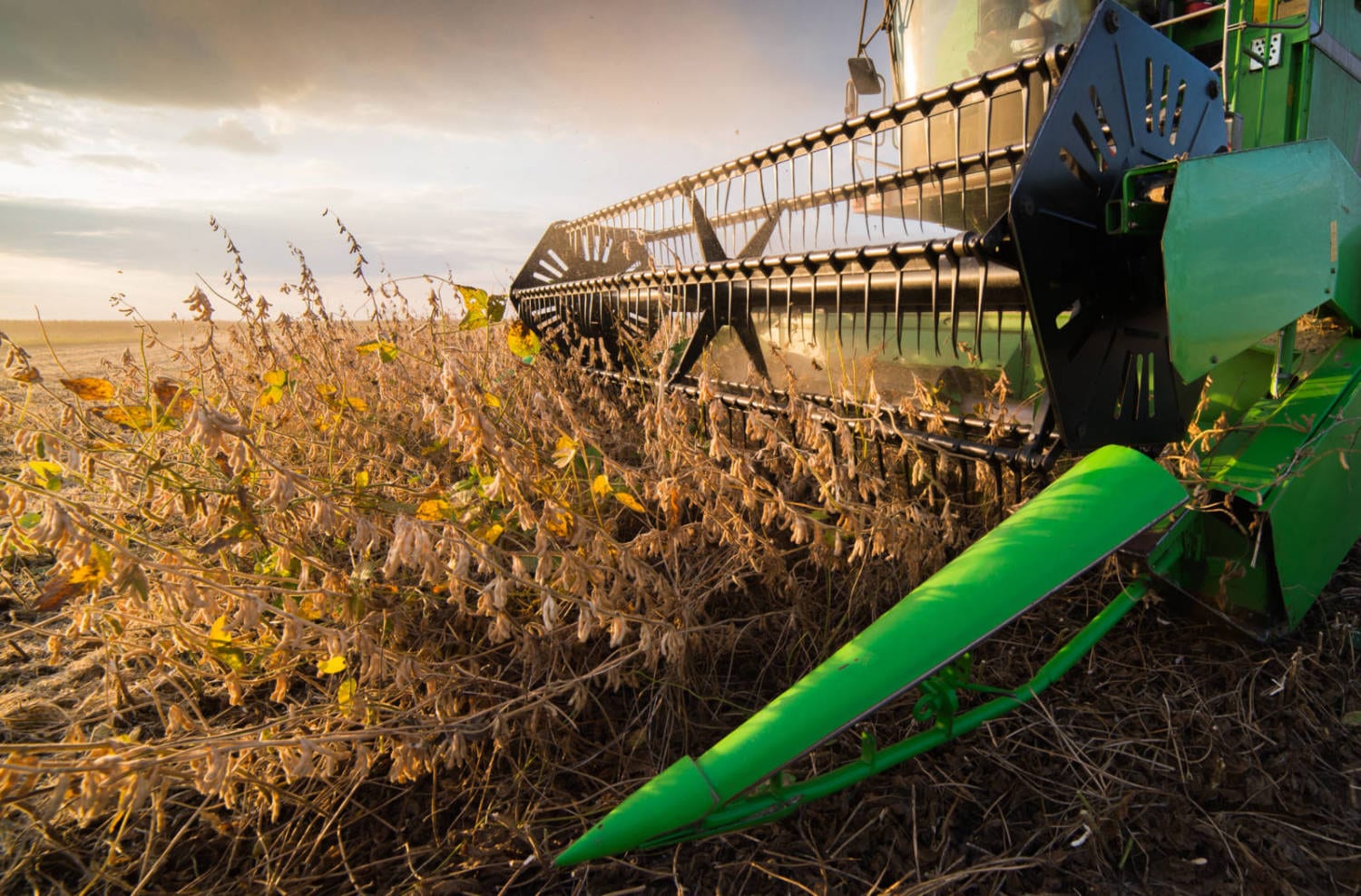A look at the equipment staple that farmers use to cut and harvest soybeans
Across America’s heartland, soybean farmers are getting ready to harvest another abundant, sustainable crop. No single tool or piece of equipment is more integral to this process than the combine harvester, or combine.
As farmers take to their combine cabs this fall, here’s a look at the equipment that helps them harvest soybeans and other crops.
Combine Mechanics
Combines are large, costly machines that are made up of several basic mechanical components: a header, thresher, separator, and straw chopper, in addition to fans, conveyors and sieves.
The combine harvests grain in three basic steps of cutting, threshing and cleaning.
First, headers, or feeders, evenly “feed” the plant into the machine as farmers drive the combine through the crop field. Combines often feature removable headers that can be changed depending on the crop harvested; soybeans are cut with a “flex head” feeder.
Once cut, the machinery flattens and smooths the plants. Next, it threshes them (in an area called a threshing drum or rotor) to knock pods from stalks (or kernels from corn cobs).
Using a complex series of fans and sieves, the soybeans are then separated from debris and crop residue, and the unwanted material is spread out of the back of the combine, back into the field, while the grain is collected in a tank until the tank becomes full and farmers empty it into a tractor and auger cart or truck.
A Labor Saver
In the 1980s, most manufacturers began equipping combines with on-board electronic features to help operators become more efficient. Cabs themselves became more comfortable, and, over the years, functionality has been installed to help farmers monitor soil health and other factors from the combine cab.
The basic design and purpose, however, remains much the same as it’s been for more than a century: to save man hours and labor, helping farmers get their crops from the field to storage or processing.
